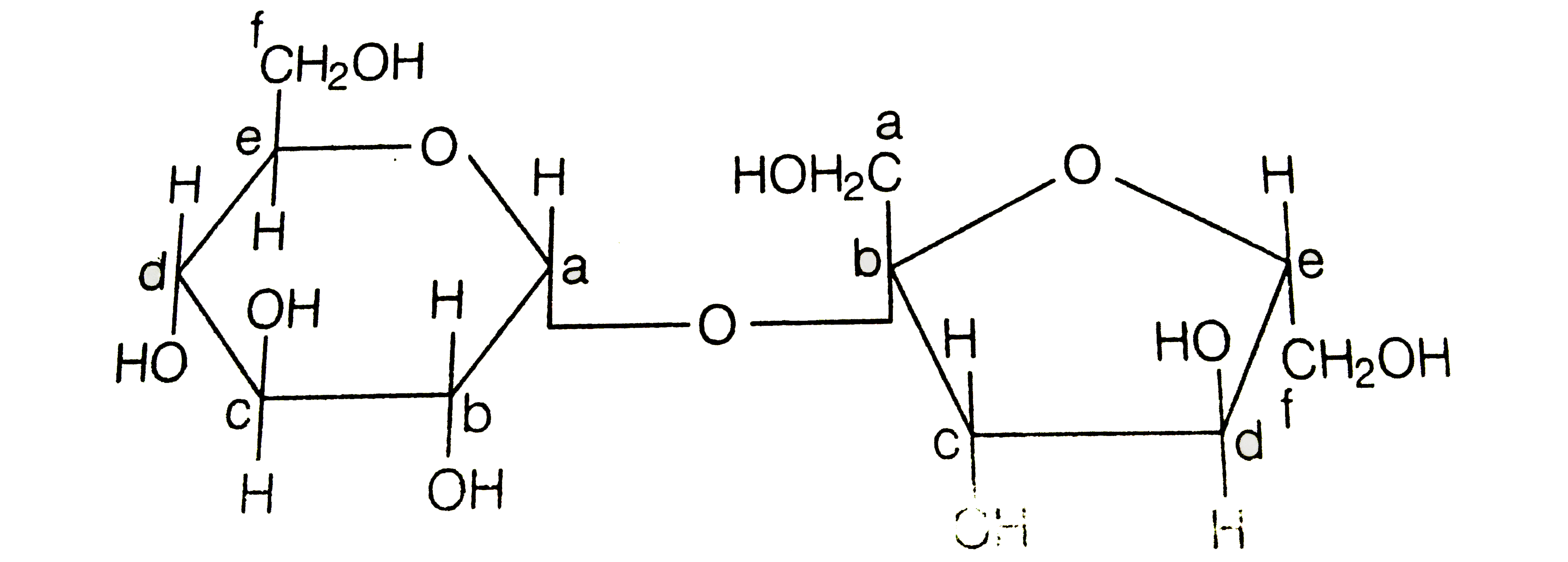In which polysaccharides are a-D-glucose and B-D-glucose units found and how do these polysaccharides differ from one another in chemistry and in function and location in plant cells?
Step-by-Step Solution:
1. Understanding α-D-glucose and β-D-glucose:
- α-D-glucose and β-D-glucose are two forms of glucose that differ in the orientation of the hydroxyl group (-OH) attached to the first carbon atom. In α-D-glucose, the hydroxyl group is positioned below the plane of the ring, while in β-D-glucose, it is above the plane.
2. Identifying Polysaccharides:
- The polysaccharide that contains α-D-glucose units is starch.
- The polysaccharide that contains β-D-glucose units is cellulose.
3. Chemical Differences:
- Starch is composed of α-D-glucose linked together by α(1→4) glycosidic bonds, which allows it to form a helical structure.
- Cellulose, on the other hand, is made up of β-D-glucose linked by β(1→4) glycosidic bonds, resulting in a straight, rigid structure that forms microfibrils.
4. Function of Polysaccharides:
- Starch serves as a storage polysaccharide in plants, storing energy that can be utilized when needed.
- Cellulose acts as a structural polysaccharide, providing rigidity and strength to the plant cell walls.
5. Location in Plant Cells:
- Starch is synthesized and stored in the chloroplasts, primarily found in the leaves of plants.
- Cellulose is found in the cell wall of plant cells, contributing to the overall structure and support of the plant.
Summary:
- Polysaccharides: Starch (α-D-glucose) and Cellulose (β-D-glucose).
- Chemical Differences: Starch has α(1→4) linkages; Cellulose has β(1→4) linkages.
- Function: Starch stores energy; Cellulose provides structural support.
- Location: Starch is in chloroplasts; Cellulose is in cell walls.
---
- α-D-glucose and β-D-glucose are two forms of glucose that differ in the orientation of the hydroxyl group (-OH) attached to the first carbon atom. In α-D-glucose, the hydroxyl group is positioned below the plane of the ring, while in β-D-glucose, it is above the plane.
- The polysaccharide that contains α-D-glucose units is starch.
- The polysaccharide that contains β-D-glucose units is cellulose.
- Starch is composed of α-D-glucose linked together by α(1→4) glycosidic bonds, which allows it to form a helical structure.
- Cellulose, on the other hand, is made up of β-D-glucose linked by β(1→4) glycosidic bonds, resulting in a straight, rigid structure that forms microfibrils.
- Starch serves as a storage polysaccharide in plants, storing energy that can be utilized when needed.
- Cellulose acts as a structural polysaccharide, providing rigidity and strength to the plant cell walls.
- Starch is synthesized and stored in the chloroplasts, primarily found in the leaves of plants.
- Cellulose is found in the cell wall of plant cells, contributing to the overall structure and support of the plant.
- Polysaccharides: Starch (α-D-glucose) and Cellulose (β-D-glucose).
- Chemical Differences: Starch has α(1→4) linkages; Cellulose has β(1→4) linkages.
- Function: Starch stores energy; Cellulose provides structural support.
- Location: Starch is in chloroplasts; Cellulose is in cell walls.
Topper's Solved these Questions
- BIOMOLECULESBOOK - ICSECHAPTER - BIOMOLECULESEXERCISE - TEST YOUR PROGRESS (SHORT/LONG ANSWER TYPE QUESTIONS)
1 Videos
- BIOMOLECULESBOOK - ICSECHAPTER - BIOMOLECULESEXERCISE - TEST YOUR PROGRESS (HIGHER ORDER THINKING SKILLS QUESTIONS)
8 Videos
- BIOMOLECULESBOOK - ICSECHAPTER - BIOMOLECULESEXERCISE - TEST YOUR PROGRESS (VERY SHORT ANSWER TYPE QUESTIONS)
77 Videos
- BIOLOGY ISC SAMPLE QUESTION PAPER 2019BOOK - ICSECHAPTER - BIOLOGY ISC SAMPLE QUESTION PAPER 2019EXERCISE - PART-II (SECTION -C)
6 Videos
- BODY FLUIDS AND CIRCULATIONBOOK - ICSECHAPTER - BODY FLUIDS AND CIRCULATIONEXERCISE - DIFFRENTIATE BETWEEN
13 Videos
Similar Questions
The α−D− glucose and β−D− glucose differ from each other at one of the carbon atom due to difference in
View SolutionName two important polysaccharides of D-glucose.
View SolutionWhere are B-cells and T-cells formed? How do they differ from each other?
View SolutionWhat are carbohydrates ? How do monosaccharides, disaccharides and polysaccharides differ from each other? Also write two functions of carbohydrates.
View SolutionHow do the electronic configuration of the elements with Z=106−108 differ from one another?
View SolutionStructure of disaccharide formed by glucose and fructose is given below. Identify anomeric carbon atoms in monosaccharide units.

(a)a' carbon of glucose and 'a' carbon of fructose
(b)a' carbon of glucose and 'e' carbon of fructose
(c)a' carbon of glucose and 'b' carbon of fructose
(d)f' carbon of glucose and 'f' carbon of fructose
View SolutionThe tissue is a group of cells having
(A) different origin
(B) Same origin
(C ) performs the same function
(D) absent in plants
View SolutionName the polysaccharide which represents the polymeric structure of β-D glucose units.
View SolutionAmylose and cellulose are both straight chain polysaccharides containing only D-glucose units. What is the structural difference between the two?
View SolutionMucilages are polysaccharides formed from galactose and mannose, they are slimy substance. Which one of the following is not a mucilage?
(a) Agar
(b) Algninc acid
(c) Rayon
(d) Carrageen
View Solution
